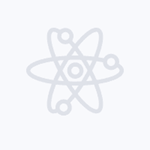
Publication 13221
Price: FREE
Water is an excellent solvent and therefore often contains many impurities. These impurities can be either beneficial, such as giving drinking water its good taste, or undesirable, such as making water hard.
There are six main types of contaminants found in water:
1. Dissolved ionized solids
2. Dissolved gases
3. Dissolved organics
4. Particulates
5. Microbials
6. Pyrogens
Distillation and deionization (ion exchange) are the most common methods of removing impurities from water. The chart in Table 1 compares the effectiveness of these two methods at removing the various impurities.
{13221_Introduction_Table_1}
The focus of this article will be the removal of dissolved ionized solids and gases by a filtration process called ion exchange. Ion-exchange resins (IER) will also be discussed, since they are the principal material used in the process.
You can remove undesirable ions in water by running the water through an ion-exchange resin. The resin will swap or exchange its “chemically pure” ions with the “impure” (undesirable) ions originally found in the water. After the ion-exchange process is complete, the water will be of higher quality with few, if any, “impure” ions remaining. However, the ion-exchange resin used will have lost some of its effectiveness since it now contains the impurities that were originally in the water and fewer of its original “pure” ions.
An example of the ion-exchange process is the softening of water. Common tap water contains chemical impurities such as magnesium ions (Mg2+) and calcium ions (Ca2+). These ions that are present in water are what make water hard. Hard water is undesirable mainly because of the mineral deposits it leaves behind and its resistance to the lathering of soap, with its resultant soap scum. These properties are so undesirable that most homes contain a water softener.
Most home water softeners are really ion-exchange columns. The ion-exchange resin is a form of sodium chloride (rock salt) which contains sodium ions (Na+). By running hard water through a water softener, the “impure” magnesium ions and “impure” calcium will swap or exchange places with the “pure” sodium ions. The end result is soft water that is high in sodium ions but free of the hard water ions, magnesium and calcium. The sodium ions do not affect the hardness of the water. The magnesium and calcium ions are now trapped in the ion-exchange resin in the water softener. When all the sodium ions originally in the water softener are used up, they must be replenished. This is done by reversing the process; that is by pouring a saturated sodium chloride solution through the ion-exchange resin. Most of us are quite familiar with lugging home heavy salt blocks or bags of salt pellets from the store for our water softeners. Because of the high concentration of sodium ions present in soft water, people watching their sodium intake should limit the amount of soft water they drink.